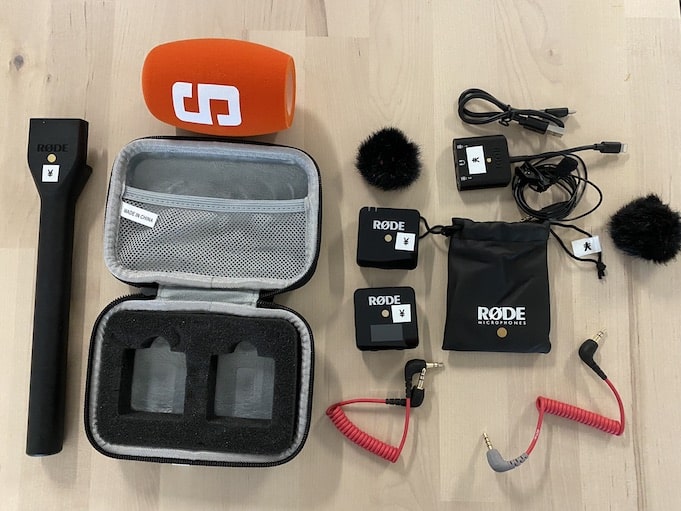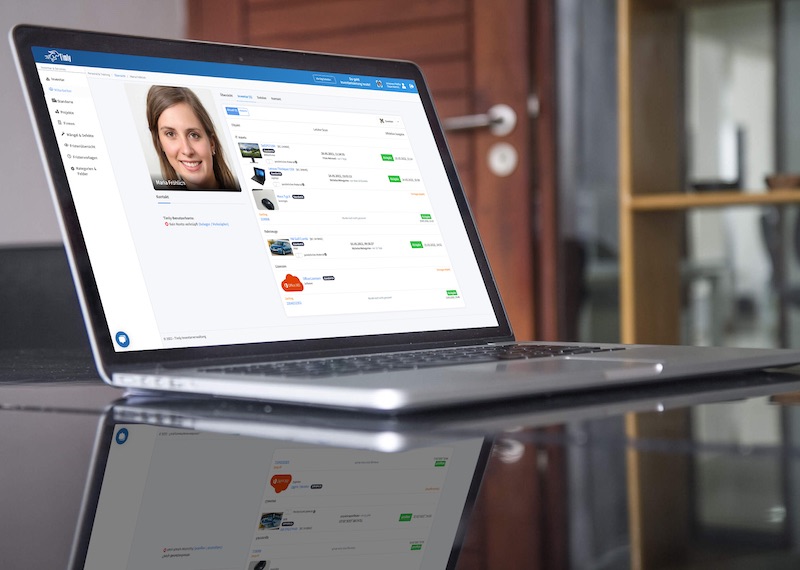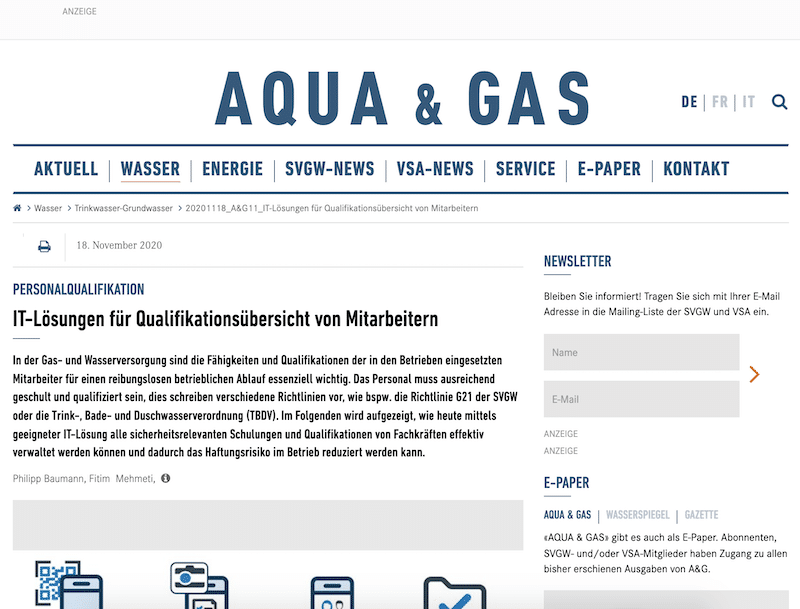
Key Takeaways:
- Inventory management software automates tasks, minimizes errors, and provides real-time visibility into inventory levels.
- Key features of inventory management software include inventory tracking, order management, forecasting, optimization, real-time analytics, and integration with other business software.
- Businesses should choose inventory management software based on their specific needs, considering factors like features, scalability, integration capabilities, cost, user interface, and vendor support.
In This Article:
- What Is Inventory Management Software? Definition
- How Does Inventory Management Software Work?
- Define Inventory Software Programs and Popular Options
- Which Type of Software Is Inventory Management Software?
- Asset Management Software in Use by Our Customers
- What Features Are Essential in an Inventory Management System Software?
- Free and Low-Cost Inventory Management Programs
- Benefits of Adopting Inventory Control Software
- Frequently Asked Questions About ‘What Is Inventory Management Software?’
What Is Inventory Management Software? Definition
Inventory management software helps businesses track, manage, and optimize inventory levels, facilitating order processing, store management, and product usage. By automating key tasks, it minimizes human error and provides real-time visibility into inventory levels. This enables companies to make informed decisions and enhance customer satisfaction.
The core functions of inventory management software are linked with a few elements, such as tracking inventory levels, managing orders, forecasting, analyzing, and identifying slow or excess inventory. This provides real-time analytics, and integration with other business software such as accounting or ERP.
How Does Inventory Management Software Work?
In today’s world, most companies are gravitating toward cloud-based solutions because they provide many advantages, such as enabling access or viewing details from mobile devices or a browser.
It is important to choose a good inventory management software or a third-party cloud provider that manages the software for you. Therefore, choosing one that provides a great standard is paramount. By selecting the right vendor, you can reduce the burden of managing the software. Hence, all you need to do is choose the right inventory management software and pay a monthly subscription or annual fee for the type of access. This can range from USD 100/month to USD 3,000/month, depending on whether it is a basic or advanced solution.
Here’s how inventory management software works:
- It provides automated data entry processes that help reduce the rate of manual data entry. This helps reduce the risk of human errors and presents a more accurate update.
- It helps maintain proper inventory levels, which allows you to identify changes in demand and supply.
- Inventory management helps businesses track stock levels and receive alerts on when it’s time to restock.
- It is able to provide forecasting into data and trends. This helps anticipate demand and assist businesses in preparing for any current or future changes.
- It has the ability to send notifications when stocks start to decrease. This gives companies a way to act and reduce stockouts.
Accurate data entry and real-time updates are crucial for effective real-time inventory tracking. Here’s why:
- Stockouts are reduced because the information provided is accurate and in real-time. This helps provide the right products to meet customer demands.
- It helps businesses avoid overstocking by providing information about items that are not being sold and, thus, enabling them to adjust the number of items that are stocked.
- By providing the necessary items that are required by the customer. This will increase customer satisfaction.
Over 600 Companies, Schools and Cities Rely on Timly
(No credit card required)
Define Inventory Software Programs and Popular Options
Inventory software, or inventory management software, offers solutions that allow businesses to organize, track, and manage overall inventory and processes. Here are some key features:
- It provides item location and the number of software, thereby providing vital information and enabling stock management.
- With enhanced features, some software allows tracking of item location and offers real-time information on where their shipment is currently located. However, this would require additional features.
There are also a few types of inventory software that we could look at. They are:
- Cloud-based, which is hosted on the cloud. The software can be accessed from any part of the world, and requires internet access for usage.
- On-premises, that is installed on the company’s server. It is suitable for companies that prefer or need a high degree of customization and control.
- Hybrid software is an amalgamation of cloud and on-premise. It offers flexibility and scalability.
- Specialized software is more industry-focused, such as in healthcare, manufacturing, and retail.
Here are some analysis of the types of inventory management and their capabilities:
- Zoho Inventory: This inventory software helps companies of all sizes meet their inventory needs. It helps track orders, shipments and control warehouses.
- Timly Inventory Management Software: This software helps to locate and streamline assets while providing easy monitoring. Assets can be assigned to employees and external partners, and the solution offers security access for users. It is able to integrate with financial software like Quickbooks, ERP, and other software to accommodate business needs.

Which Type of Software Is Inventory Management Software?
Inventory management software is often part of supply chain management or enterprise resource planning (ERP) software. The operational basic elements of this software are that it allows staff to track inventory, manage orders, has stock control, real-time reporting, and integrates with other business software. Moreover, it has user management features such as access controls and users permissions, and inventory optimization that uses machine learning to enhance inventory.
How Can Businesses Choose the Right Inventory Management Software?
Businesses can choose how to improve inventory management software by considering a few factors that will help streamline their operations. To select the best solution for your business, make sure to:
- Identify business needs that are most critical and will make the biggest difference to workflows and operations.
- Understand features such as inventory tracking, order management, software integration, and cloud-based deployment.
- Determine if the software can help with the company’s growth and scale as storage and functionality start to increase.
- Access the software’s ability to integrate with your existing systems, such as ERP and CRM systems.
- Evaluate user interface, experience, and vendor customer support.
- Calculate cost and pricing of the software’s model and identify any hidden fees or charges. You will need to calculate the cost of owning it, implementation, support, and maintenance.
- Ensure that you factor in security and compliance, such as access control, data encryption, and regulatory compliance.
- Consider if the software is customizable and capable of future data import and export.
- Assess future plans and expansions to determine if software meets business needs.
Asset Management Software in Use by Our Customers
The Timly software is continuously evolving to meet the needs of our customers. In various success stories, we show you how Timly optimizes processes in companies, thereby saving significant effort. With Timly, inventory management becomes child’s play.

Optimized Device Management With Innovative Self-Inventory
SodaStream is the world market leader for water sparkling systems for domestic use and has a lot of IT equipment at its various locations. Many colleagues now work from their home offices. A digital solution for the efficient management of IT end devices became necessary...

Panasonic x Timly: Driving Technological Innovation
One of the most remarkable aspects of human ingenuity is our ability to innovate. Innovation is embedded in the DNA of consumer electronics giant Panasonic, which has diversified into a number of sectors, from heavy industry to construction...

Manage Video Equipment Efficiently Without Much Effort
The Hamburg media company always does outstanding journalistic work and is characterized by independent reporting. In order to maintain journalistic quality, the teams work with highly specialized devices – these need to be managed efficiently...

Smart City Asset Management – Timly in Use at DIGOOH
The core business of DIGOOH Media GmbH in Cologne is to manage digital city light posters (DCLP) for outdoor use in various cities in Germany. The challenge here lies in making the client’s communication message always available at the right time, in the right place...
(No credit card required)
What Features Are Essential in an Inventory Management System Software?
When selecting an inventory management system, it is crucial to identify the features that cater to your business’s specific needs. Here are some essential features to look for:
- Demand planning tools that can track and analyze information in real-time. This Helps you make decisions about production and inventory levels.
- Data analysis functions that help track key performance indicators (KPIs), current trends, and enable decision making.
- Having near- or real-time data reporting provides information about inventory, sales, and the movement of assets. Hence, allowing businesses to change or adapt in order to or stay current with market changes
- Point-of-sale (POS) integration ensures accurate keeping of sales records and inventory in real-time.
Key Features and Functions
The key features and functions of inventory management are important to streamline business operations and efficiency. Here are some features and functions to look out for:
- Businesses benefit from tracking stocks by utilizing inventory tracking, which provides insights into stock levels, order tracking, and the ability to highlight any discrepancies.
- Barcode scanning and barcode scanner inventory software provide increased accuracy and reduce manual errors.
- Utilizing serial numbers to track products helps companies locate certain products and manage inventory.
- Ordering functions such as automated ordering, which helps to set parameters on stock levels, purchase order management,which helps to track, approve, and fulfill orders.
- Automated recording that helps to maintain stock levels and ensure that businesses never run out of stock.
- Forecasting functions that use historical data to optimize inventory, and reduce waste.
- Inventory forecasting analyzes lead times, demand patterns, and supplier reliability to inform inventory decisions.
- Supply chain forecasting identifies potential disruptions and bottlenecks. This helps businesses proactively manage their inventory and reduce risks.
Advanced Features and Automation
When evaluating the advanced features and automation of inventory management software, it is important to note that these are essential if businesses want to streamline reporting and inventory alerts. This helps ensure that the right products are provided to meet customer satisfaction. Hence, the benefits include improved accuracy that helps to track and update inventory in real-time, increased efficiency as there is a reduction in keying in manual data, and better visibility that facilitates better decision making and stock management.
Free and Low-Cost Inventory Management Programs
There are a few free and low-cost inventory management programs that are on the market. However, these are not software applications but options that can be used as a workaround. They are:
- Microsoft Excel can be used as a free inventory management tool. This is for those who are just starting up and need a simple spreadsheet to track inventory, sales, and purchases. However, as the business grows, this may become an issue because it would be very taxing and you will not be able to provide real-time updates or automated tracking.
- RightControl is a free inventory software that assists in tracking inventory levels, sales, and purchases. Barcode scanning is one of the additional features you can use, but it has restrictions and is only available in certain locations and for a single user.
- ABC inventory is another free inventory management tool that offers features such as tracking, sales, and purchasing . You can program your settings to send out notifications when it is time to re-order or when stocks are low. However, as it is a free tool, only one user is allowed to use it at a single location.
Can I Use Excel for Stock and Materials Management?
Yes, businesses can use Excel for stock and material management. However, it is important to understand that this has limitations. For start-up businesses or organizations with limited inventory, this may be a good starting point. However, this may not be beneficial for organizations that are large or complex.
Hence, businesses can manage inventory by creating a spreadsheet to track stock, product, and sales information. In order to do that, one needs to:
- Create a spreadsheet with rows and columns that would accommodate the product name, quantity, and price.
- Use formulas so that you can calculate total, percentage and any changes in stocks.
- Utilize conditional formatting to provide information on low stock levels.
- Find ways to generate a simple dashboard that can provide basic key metrics.
Benefits of Adopting Inventory Control Software
Inventory control software is important for businesses that rely on inventory management to operate effectively. Here are some techniques and strategies for inventory control:
- Batch tracking is used for perishable inventory with items that have expiration dates. You can track items by batch number so you can determine product quality and compliance.
- Cross-docking helps reduce inventory and upfront costs. You will not need a warehouse because stocks are shipped to customers once items are received from the supplier.
- VED analysis is a technique that classifies inventory items as vital, essential, and desirable. This assists companies maintain optimal levels.
- Economic Order Quantity (EOQ) helps to calculate the required quantity to minimize costs by factoring in production costs, demand rate, and other variables.
- Just-in-time (JIT) inventory is a system that orders and receives inventory in time to meet customer needs. This would take inventory,storage,and waste out of the picture.
- Demand forecasting uses historical information to determine what the customer might require in the future. This information is used to update inventory.
- Minimum Order Quantity (MOQ) is a common strategy that involves purchasing items in bulk to reduce costs.
- ABC analysis helps to break down inventory into three (A,B,and C) categories. This breakdown is based on value, volume, or other variables that will help manage critical stock.
Several companies have achieved significant benefits by implementing inventory control software and strategies. For example:
Amazon has transformed how they managed their inventory.Their organization scaled their inventory operations,offered two-day delivery, implemented recurring ordering, and provided real-time tracking. The barcode scanning technique assisted to accurately track the products that were moving in and out of their warehouses. This helped the organization maintain accurate information and, thus, improved accuracy.
Cost Savings and Supply Chain Efficiency
Inventory management software can help you reduce errors and ensure safety by improving the efficiency of supply chain management and increasing customer satisfaction. As such, it is able to achieve this by:
- Developing a demand-planning strategy by studying what the customer needs and devising protocols that help streamline operations and make them more efficient.
- Implementing systems that are flexible and adaptable, which allow for a response to changes, such as customer needs and manufacturing processes.
- Investing in automated systems that assist with picking and sorting, packing and processing, and reducing time to reach the customer.
Frequently Asked Questions About ‘What Is Inventory Management Software?’
What Is Inventory Management Software?
How Can Businesses Choose the Right Inventory Management Software?
Businesses can choose the right inventory management software by considering several key factors to streamline their operations:
- Identify business needs that will help supply chain operations track inventory and manage locations.
- Understand features such as inventory tracking, order management, software integration, and cloud-based deployment.
- Determine if the software can help with the company’s growth and scale as storage and functionality start to increase.
- Access the software’s ability to integrate with other existing systems, such as ERP and CRM systems.
- Evaluate user interface, experience, and vendor customer support.
- Calculate cost and pricing of the software’s model and identify any hidden fees or charges. You will need to calculate the cost of owning it, implementation, support, and maintenance.
- Ensure that you factor in security and compliance, such as access control, data encryption, and regulatory compliance.
- Consider if the software is customizable and capable of future data import and export.
- Assess future plans and expansions to determine if software meets business needs.
Recommended for You:











































































































































































































































